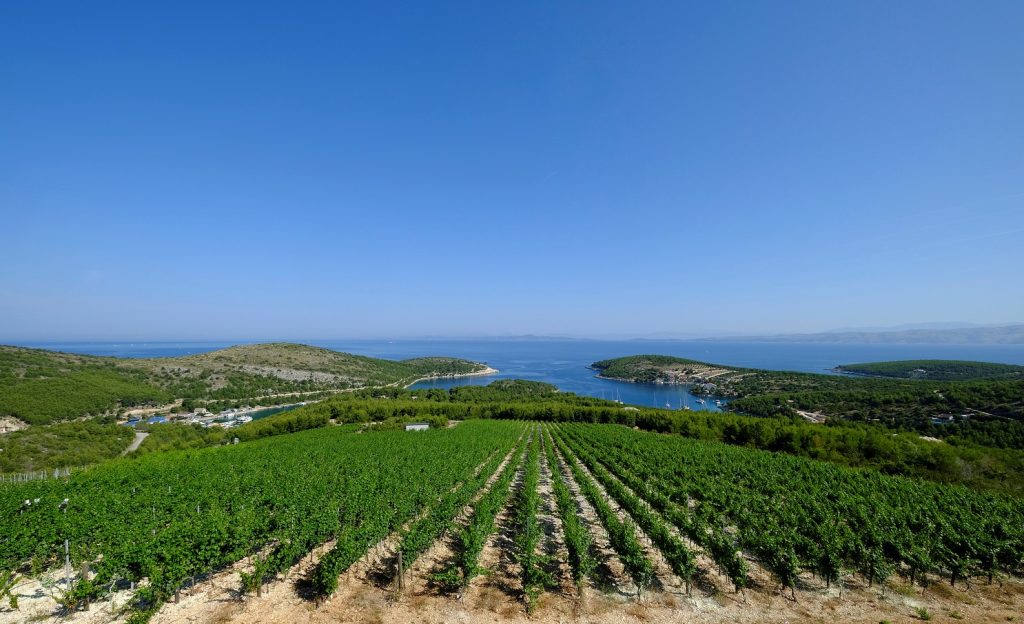Soon after I moved into the apartment above my soon-to-be parents-in-law, my father-in-law took me down to the garage. He was a lovely man, a real man of the soil, and the hardest-working person I ever met. We had no language in common back then and so I was curious as to what we would be doing in the garage.
At the back of the garage were three stainless steel tanks of about 200 litres each. The one on this left had three letters written on it – POL. A gift for me. He took an empty 1.5 litre empty plastic Coke bottle and filled it with his own red wine. It was very, very drinkable. And so life was very pleasant, as that bottle was refilled over and over again until one day nothing more came out of that magical tank. It was one of the many generous gifts he gave to all.
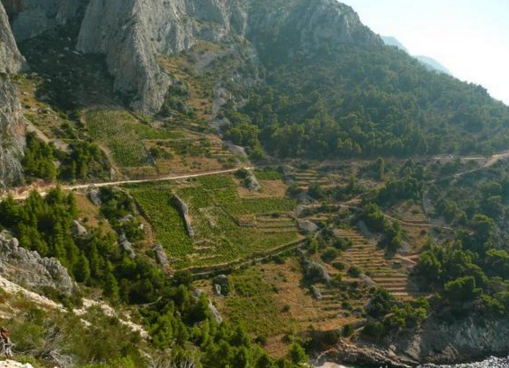
(The steep vineyards of southern Hvar, where some of the best Plavac Mali is produced)
And it was far from the only time I drank wine from an unmarked plastic bottle. In fact, I have probably drunk more wine from plastic bottles than proper wine bottles in my 20 years in Croatia.
For Croatians do wine in a VERY different way to the rest, and it is easily the most interesting wine country I have had the pleasure to explore. On so many levels.
I should explain that I have a little background in wine, having worked in our small family business importing wines from small family growers from France, Italy, Spain and Germany. I knew my Puligny Montrachets from my Chablis Grand Cru, my Cru Beaujolais from my Beaujolais Nouveau, as well as the taste of the few lesser-known quality grape varieties in the classic regions, such as Bourgogne Aligote, and the only time I would drink chilled red wine was a St Nicholas de Bourgueil on a hot summer’s day.
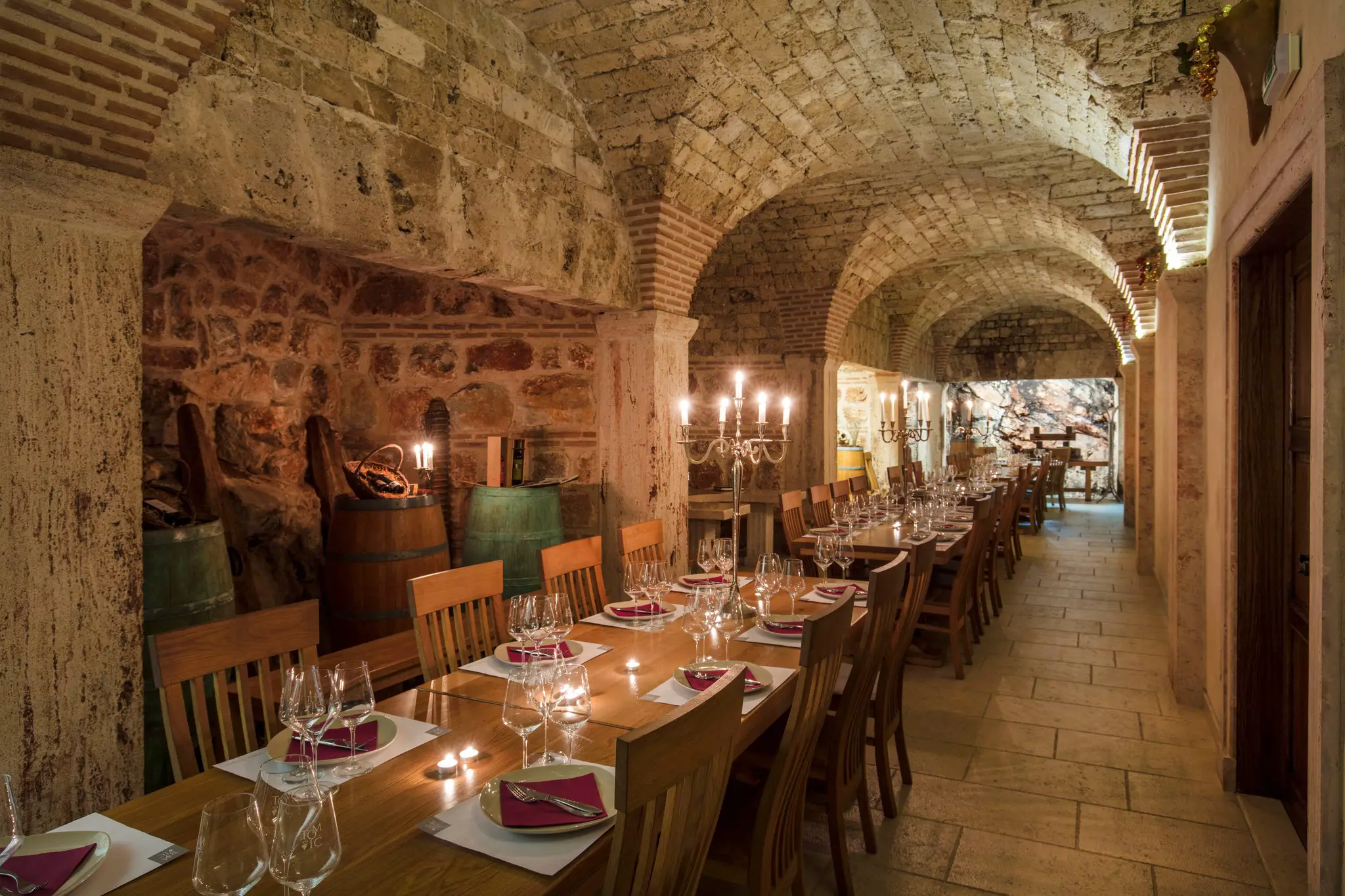
(The Andro Tomic wine cellars in Jelsa are one of the more impressive Croatian wine tasting locations)
And then I came to Croatia, whose wonderful – and relatively untold – wine story was the total opposite of everything I had come across elsewhere.
My Croatian wine journey did not start well. When I first arrived 20 years ago, the most common wines on the tables of Jelsa’s restaurants were either house wine, or litre bottles of Faros red and Faros white. After a couple of attempts, I decided to stick to beer. Hvar may be a beautiful island, but its wines were not its stong point, I concluded.
How wrong I was!
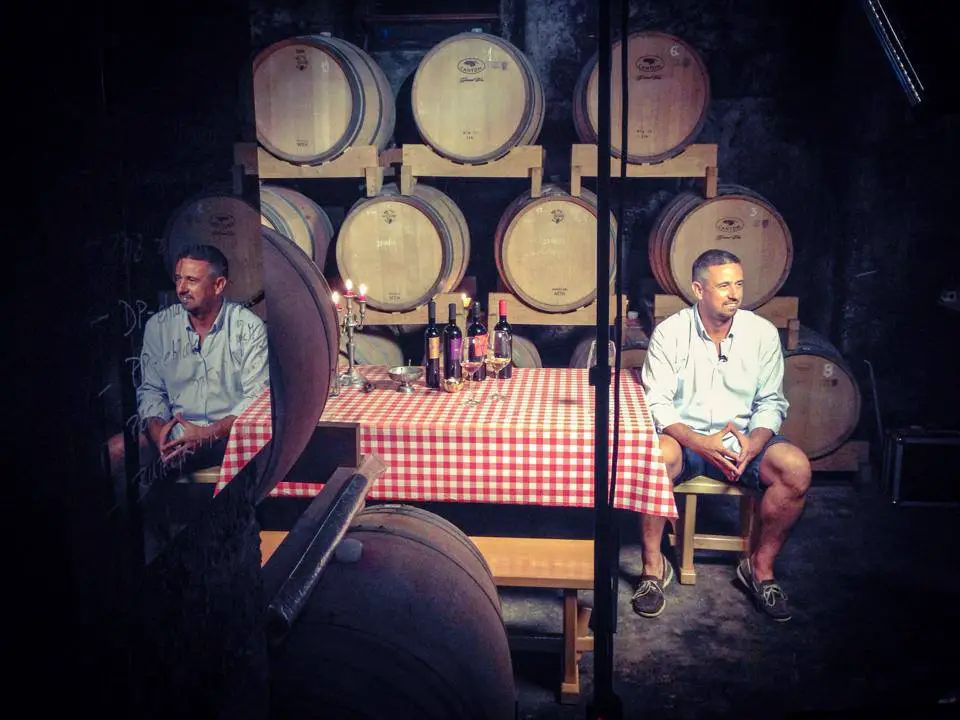
(Candlelit wine and olive oil tasting in the cellars of Ivo Dubokovic in Jelsa)
It was only years later when I started researching for the first edition of Hvar, An Insider’s Guide, that I realised just what I had been missing. Not only was Hvar a wine island, but it had so MANY fascinating stories. A wine tradition dating back 2,400 with vines and olives brought by the invading Ancient Greeks, which are tended in much the same way today on a UNESCO World Heritage Site called the Stari Grad Plain. How cool is that? And while I may have been drinking average table wine in restaurants, those in the know were appreciating the quality. Among the Hvar wine portfolio was a hearty red which was served in a 3-star Michelin restaurant in Holland, an organic gold medal winner in Germany, and a Grand Cru which was a champion in Bordeaux. Indeed the wine scene on Hvar was so interesting that a British Master of Wine, Jo Ahearne, moved over from the UK to become the first MoW to produce wine in Croatia – Hands from London, Grapes from Hvar.
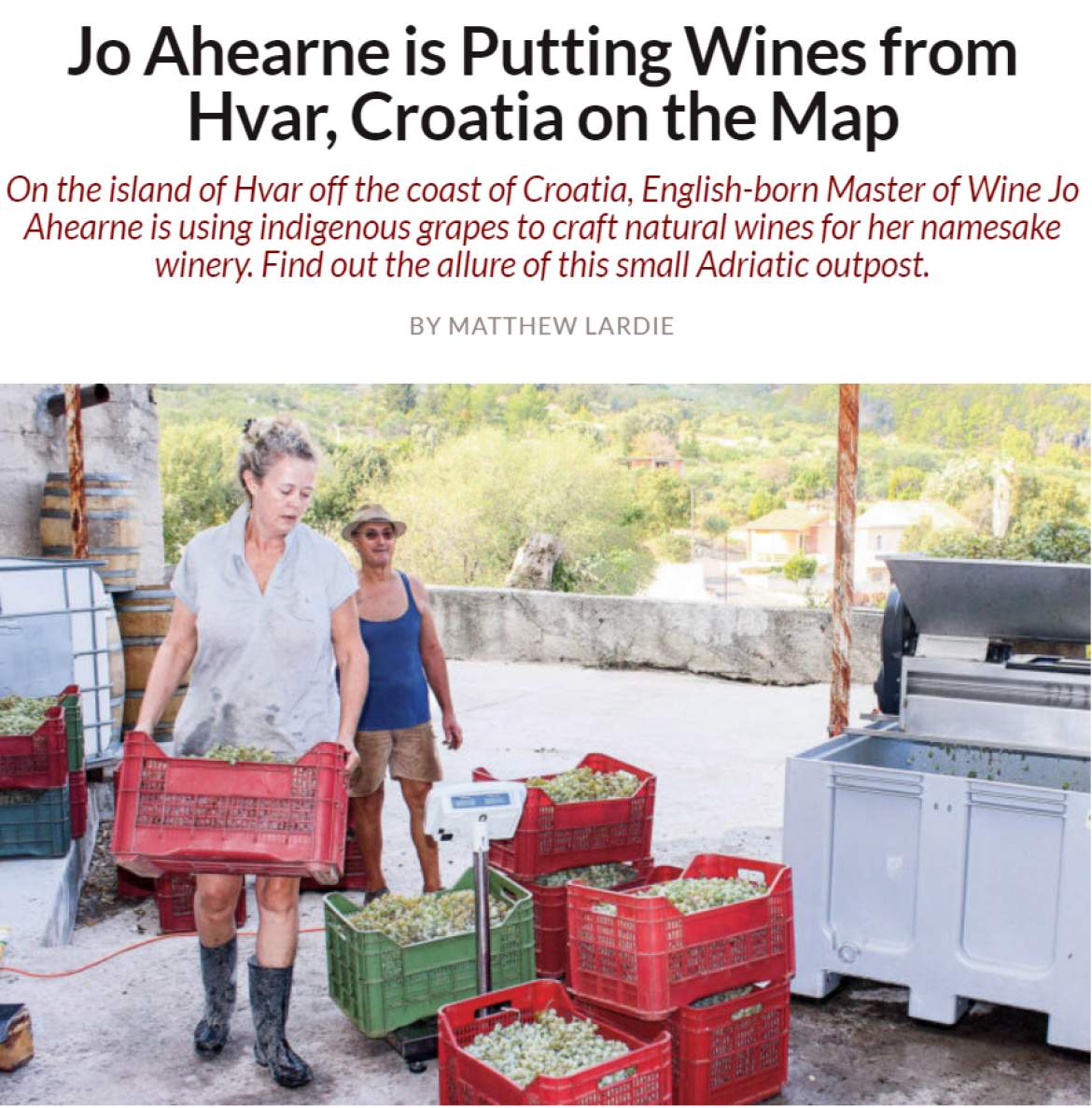
And it was the grapes from Hvar that was the biggest surprise.
As I started to research the Croatian wine scene, I was stunned. This small country apparently has more than 130 indigenous grape varieties. Among them was one called Crljenak Kastelanski, which researchers at the University of Davis proved in 2001 to be a 100% DNA match for the powerful Californian red, Zinfandel. That’s right – the birthplace of Zinfandel is Dalmatia.
And the undisputed king of indigenous grape varieties, at least on Croatia’s islands, was Hvar. Its best-known variety is a white called Bogdanusa – which translates as ‘a gift from God’ – but it is by no means the only one. Other varieties that only grew on Hvar, I learned, included Prc, Darnekusa and Kuc. But there was more to come.
Commercial private wineries are a relatively new thing in Croatia, given the socialist Yugoslav past, and they only began to emerge around 1990. Most of the wine was produced in large cooperatives, where the quality often suffered in favour of quantity (but with major exceptions, such as that organic gold-medal-winning PZ Svirce on Hvar). This to me is one of the most fascinating parts of the Croatian wine story. Small growers finding their way without experience of Western marketing and usually without much infrastructure. And each has a different vision and area of interest. One can visit Hvar, for example, and visit 10 wineries and wonder if you are on the same island.
One of my favourite little wineries to visit is a guy called Teo Huljic in the back streets of Jelsa. He only produces about 7,000 litres a year, much of which he sells in his adjacent restaurant, but his passion for wine and the island’s heritage is addictive. While Hvar has several grapes that only grow on the island, Huljic has discovered and is preserving several more. He is the only winemaker in the world who produces a 100% Mekuja (around 600 bottles), and has even managed to bottle 70 litres of Palaruza, a very drinkable white that not even my father-in-law had heard of, and Google only had one entry on when I researched it.
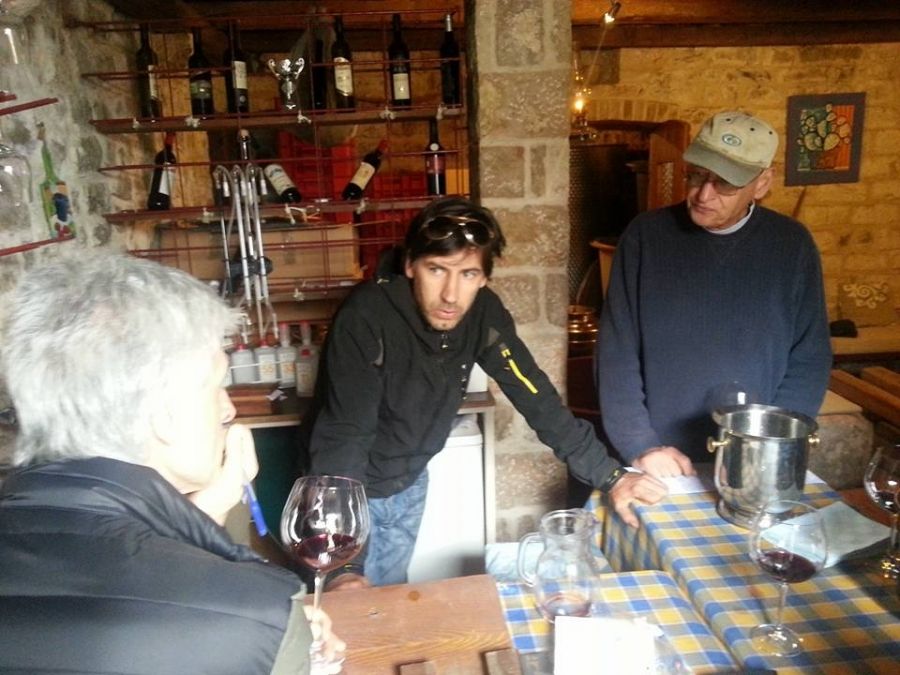
(Teo Huljic conducting a tasting of Hvar’s indigenous wines)
And if you are a real wine enthusiast, where else in the world can you island-hop and try grape varieties indigenous to a particular island? After sampling the indigenous viticultural joys of Hvar, check out Vugava on Vis, Dobrota on Solta, Zlahtina on Krk, and the supremely unpronounceable Grk in Lumbarda on Korcula.
Grk is also home to my favourite Croatian wine story. The white wine variety (and my favourite in Croatia) only grows on the sandy soils of Lumbarda, a few kilometers from Korcula Town. As such there are only 33,000 litres a year produced, which puts a strain on supply as it is one of the top restaurant white wines in Croatia. As wine tourism developed, a rule was introduced that each person tasting could buy a maximum of 2 bottles per visit. Otherwise the supply would quickly run out.
The story – which has been verified locally – goes that a member of the Kennedy family ordered the best local white wine in an exclusive Dubrovnik restaurant. So impressed were they that they sailed to Korcula the next day and visited the winery for a tasting.
“Fantastic wine. We will take two pallets.”
“Unfortunately, that is not possible, Sir. We only sell a maximum of 2 bottles per person.”
“We are the Kennedy family. We will take 2 pallets.”
“We are the Grk family. Two bottles only.”
I liked that. They apparently returned to the Dubrovnik restaurant and bought the whole supply. At restaurant prices.
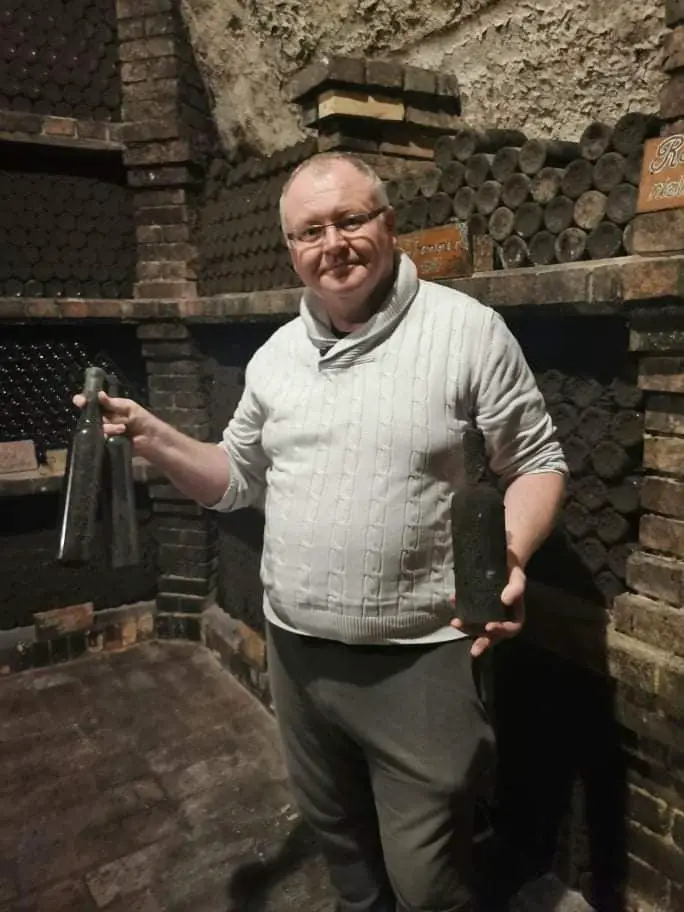
Croatia does have magnificent wine estates with lots of tradition in addition to these small growers. One of the finest wine experiences is Croatia’s most eastern vineyard, Ilocki Podrum, in Ilok. Purveyors of wines to the British Royal Family. More than 11,000 bottles of Traminac 1947 were ordered for the Queen’s Coronation in 1953. The two other bottles in my hands are the same wine, later vintage, for the weddings of Princes Harry and William. And there are still a few bottles of the Queen’s ’47 – but it will set you back 55,000 kuna.
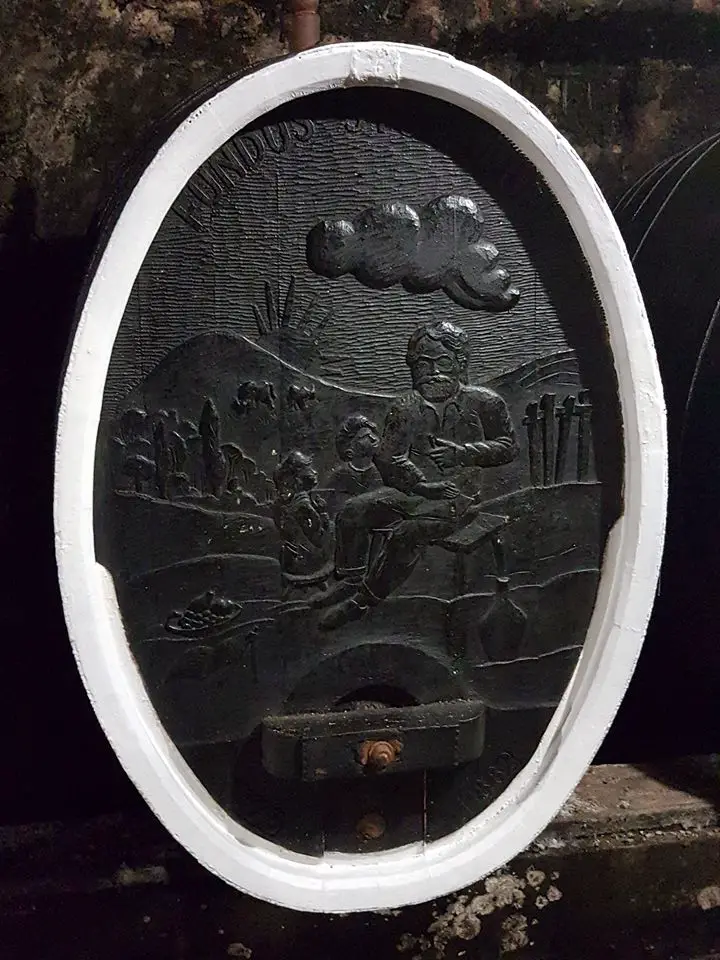
And don’t miss Croatia’s oldest winery in Kutjevo, where the oak barrels literally tell the story of the town’s 800-year history.
As impressive as these estates are – and there are several more – it is the cosy and unpretentious approach of the hundreds of Croatian winemakers who are pushing forward in their own corners of the country, and with increasing success.
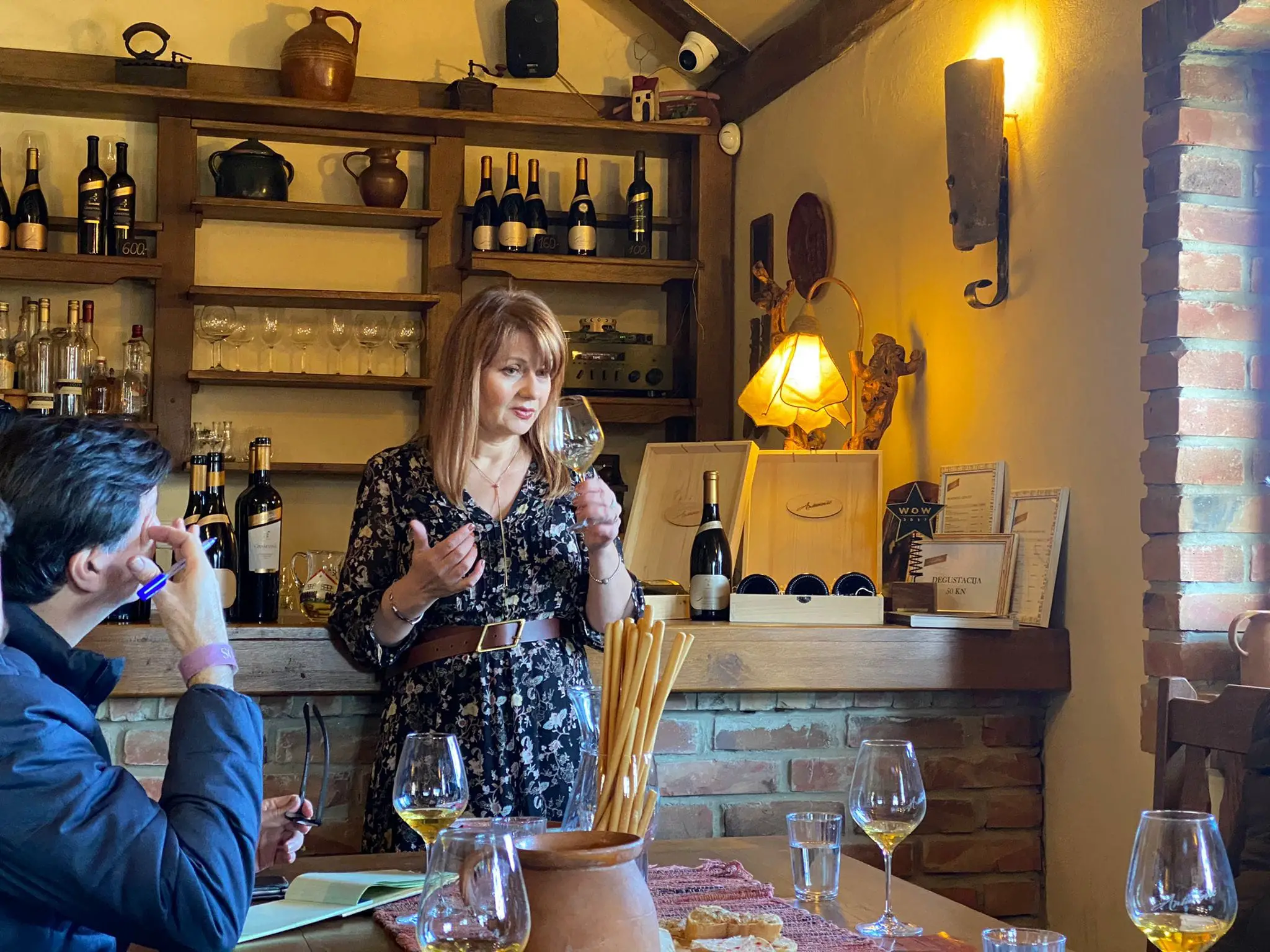
The best white wine I have tried in Croatia? A lesson in just how exciting the Croatian wine scene is. I came across it in a village in eastern Croatia I had never heard of until I arrived – Dalj. And the winemaker – Jasna AntunovicTurk had quite the story. The first female winemaking owner of a vineyard, her passion is Grasevina, but the wine which blew me – and the judges at Decanter – was her 2013 Chardonnay. It would not have been out of place in the premium vineyards of Burgundy.
And it is not just in wine-growing regions of Croatia that you will meet outstanding wines – they are to be found in the most unexpected places. Meet the only winemaker in Split – in an atomic bunker!
The majority of Croatian winemaking is a much less formal affair, and many families in Dalmatia, for example, make their own for family consumption. And wine purists may look in horror at some of the practices they will encounter, but it is more proof that Croatia does things differently.
Red wine and still water is a drink of choice for many in Dalmatia – bevanda. Head to the continent and you will no doubt be introduced to Gemist – white wine and sparkling water. And if you want to go really local, check out the annual Biklijada in Vrgorac, where they celebrate the rather curious bikla – red wine and goat milk. My father-in-law used to drink it as a child, very nourishing apparently. As is another Dalmatian speciality I have yet to try for some reason, Prosek with a raw egg. Great for protein for the little ones.
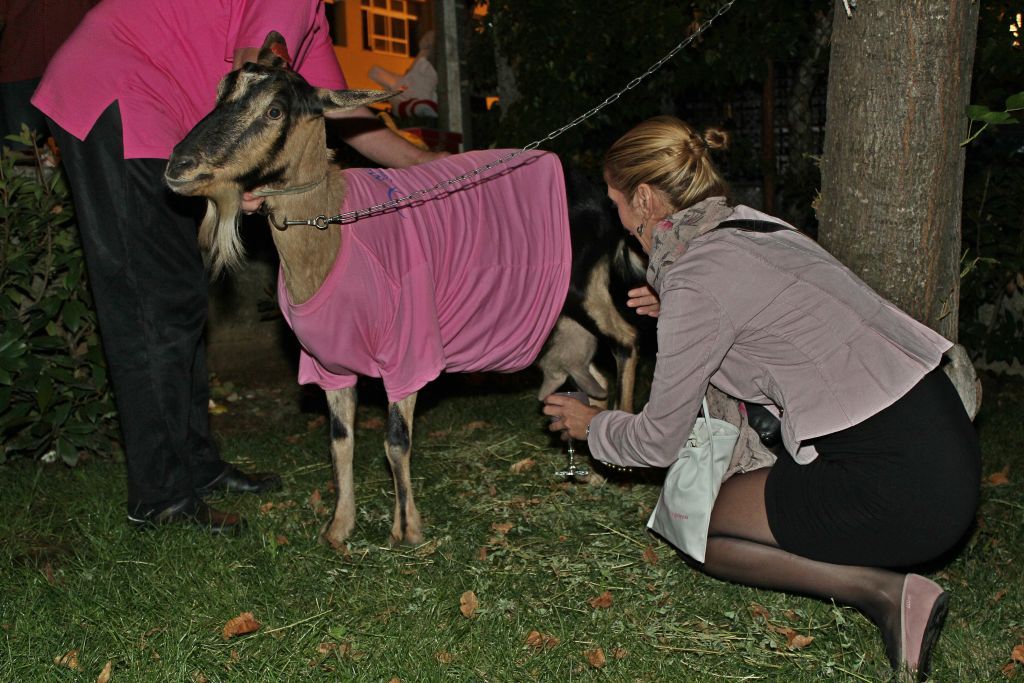
Croatian wine has given me many memorable nights over the last two decades (as well as a few where the memories are a little hazy). Warmth, friendship and authenticity take precedence over protocol and presentation in many cases. Croatian wine is, for me, a symbol of the quality and diversity which makes the Croatian experience so unique, and it has certainly changed my perceptions about wine over the years.
Why not come and have a glass yourself – bring your own plastic bottle for the true rustic experience.
****
What is it like to live in Croatia? An expat for 20 years, you can follow my series, 20 Ways Croatia Changed Me in 20 Years, starting at the beginning – Business and Dalmatia.
Follow Paul Bradbury on LinkedIn.
Croatia, a Survival Kit for Foreigners will be out by Christmas. If you would like to reserve a copy, email [email protected] Subject 20 Years Book

